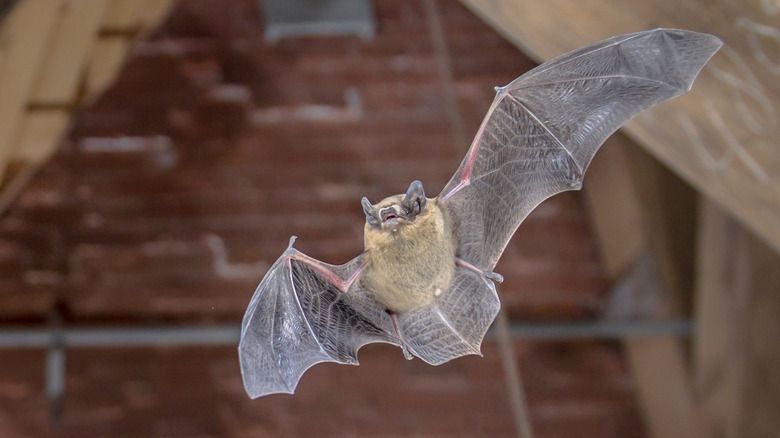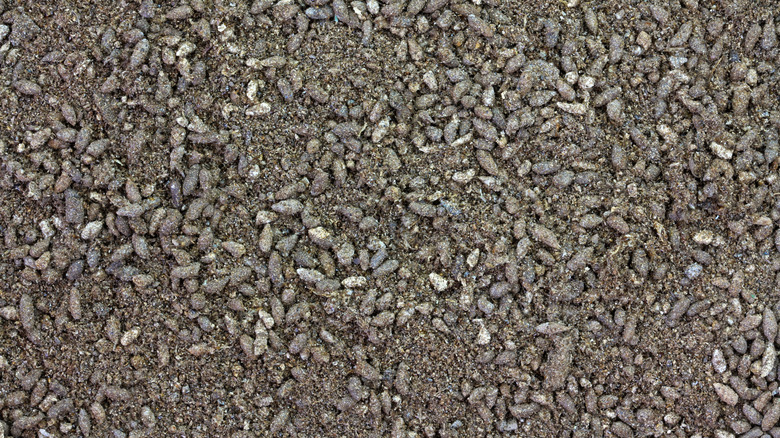How To Safely Use Bat Guano To Amend The Soil In Your Garden
Your garden can benefit from the excretory droppings of bats, known as guano, which helps enrich your soil by providing carbon and energy to support helpful microbes. These microbes play a key role in breaking down materials and improving soil health, eventually leading to richer organic matter. The fact that bat guano is commonly used as fertilizer in agriculture is a good sign that it could also be valuable in your garden. Guano has a long history as a fertilizer in the United States — so long, in fact, that it's the first commercial fertilizer ever sold in this country. One benefit of using bat guano is its high nitrogen content, an essential nutrient for plant growth. Guano also binds soil, thereby helping it retain water and improving soil texture. It can also work in the opposite direction, loosening dense soil to aid water penetration.
Sounds great, right? But you may have heard that guano is dangerous to work with. The danger comes from the possibility of inhaling toxic fungi, especially those that cause histoplasmosis, a lung infection that can range from mild to life-threateningly severe. To mitigate the chance of inhaling dust, wet guano down before handling it. You'll also need to wear gloves and use a HEPA filter mask while working with guano. Do not work with guano if you have a compromised immune system.
Take precautions to work with guano safely
If you're willing to work with the risks, how would you even collect bat guano in the wild? In large caves where bats live, they can excrete up to 50 tons of guano annually, but you're probably not likely to go guano mining. One option is to install a bat house and, wearing mask and gloves and using a shovel, collect the guano that falls to the ground under it. You could also place a container under the house to collect guano so you don't have to scoop it. To increase the guano potential, you can attract more bats to your bat house with must-know tips, like ensuring it's adequately sized and installed in a sunny spot. (Bonus: Building a bat house might be the mosquito solution of your dreams). You are also not required to gather your own guano; you can purchase commercial bat guano.
It doesn't take much guano to benefit your plants. Using all safety precautions, mix a tablespoon of guano with a liter of warm water and leave overnight. Then, water your plants with this mixture weekly. Use the solution right away so bacteria don't have a chance to grow. Another option is to apply the guano directly by burying it in the soil and then water it. Don't leave it on the surface to dry out, since this renders it ineffective. Wash your hands after working with guano.
Keep in mind that the value and chemical composition of guano in the wild will vary depending on the diet of the bat. It also loses nutrients as it decomposes. After trying guano on your plants, you may have a new perspective on what it means when bats are in your yard.

